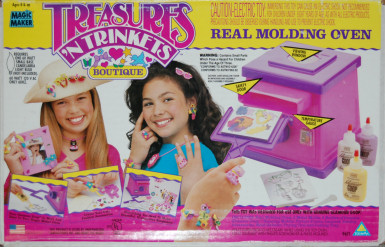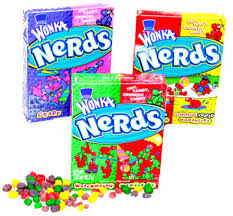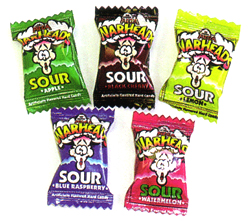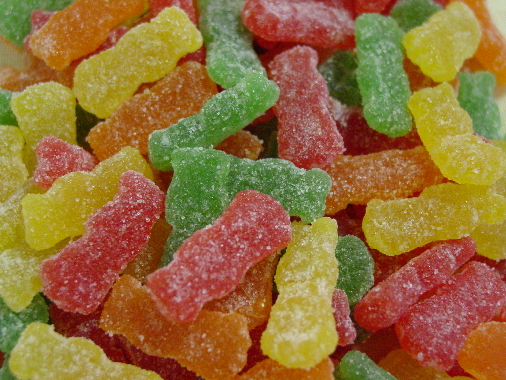Not necessarily, it turns out. Nostalgia for the disputably existent "Good Old Days" is a thriving marketplace of discussion, ably summed up in the thesis "Kids today just don't understand." Just 15 years ago, we were right there with DJ Jazzy Jeff and the Fresh Prince lamenting the lack of understanding among parents. How quickly the "just don't understand" tables have turned. Soon we may not even have the energy to rap about it.
Before we all turn into old coots grumbling about our simpler lifestyles, let's take some time to bask in the glow of our once taken-for-granted but now nearly obsolete pre-2000s technology experiences:
Being Out of Touch (unreachable by phone, text, implanted homing device, etc)
 Gone forever are the blissful days of being dropped off by a parent at the mall or movies with a quarter (a quarter!) in your pocket for emergency purposes. Instead, today's kids have the added mischief-thwarting stress of cell phone GPS tracking and parents' persistent text messaging. We've all but pet-style micro-chipped our children, ensuring that parents know of their children's exact whereabouts at all time.
Gone forever are the blissful days of being dropped off by a parent at the mall or movies with a quarter (a quarter!) in your pocket for emergency purposes. Instead, today's kids have the added mischief-thwarting stress of cell phone GPS tracking and parents' persistent text messaging. We've all but pet-style micro-chipped our children, ensuring that parents know of their children's exact whereabouts at all time.Getting Lost
 I'll admit this still happens to me, but mostly because my on-hand portable technology is far behind the curve. For the majority of us, finding our way from point A to point B is as simple as inputting the destination address and letting a robotically polite voice do the guiding. Even the worst case technological scenario involves a printout from an online map service. It's tough to recall a time when we relied on the more primitive "Take a right on Main Street"-type directives scrawled on scraps of paper during a phone call.
I'll admit this still happens to me, but mostly because my on-hand portable technology is far behind the curve. For the majority of us, finding our way from point A to point B is as simple as inputting the destination address and letting a robotically polite voice do the guiding. Even the worst case technological scenario involves a printout from an online map service. It's tough to recall a time when we relied on the more primitive "Take a right on Main Street"-type directives scrawled on scraps of paper during a phone call.Not Knowing who's Calling When You Pick Up the Phone

Once upon a time, you could lift a receiver with a flutter of hope and mystery regarding the identity of the person on the other line. Today, whether it's a potential date or the automated call service from CVS pharmacy calling to remind you of a prescription pickup, you know before even accepting the call. Where's the intrigue and allure in that?
Calling MovieFone

Imagine never having the joy of hearing the jovial deep intonations of the MovieFone guy. Sounds pretty sad, right? Now multiply that sadness times every child out there today who will never experience the joy of MovieFone. Sad, right? A little? Okay, fine, it's not a huge loss, but I'll miss it nonetheless. It's been real, MovieFone guy.
Looking Something Up in the Encyclopedia

Or better yet, looking something up on an encyclopedia CD-ROM. Before the days of the internet, this seemed like a high-tech research breakthrough. We could search for articles, watch videos, listen to sound clips...you know, like what we do now every day with the internet.
Back in the 90s, when we had a query, it was actually possible to come up empty on an answer. A frightening notion, really. There was no Googling to get us out of a quandary. We could go to the library or phone a friend, but failing those options we might actually have to have to write things off as a mystery. When I think of how frequently I type into Google a question about how to get my dog to sit still (positive reinforcement and/or high-grade tranquilizers) or why I'm tired all the time (possibly anemia but more likely daily caffeine overdose,) it's frightening to imagine a time when I'd be resigned to not immediately identifying an answer.
Not Being Able to Place an Actor or Actress
 It used to be a source of frustration to see a moderately familiar face in a TV show, movie, or commercial and not remember the 37 other shows in which you'd previously seen that actor. The unanswered question would haunt you, hanging over your head and enshrouding you in a state of generally distracted confusion for days at a time. These days it takes minimal effort to access the internet and putz around for a few minutes on IMDB. Sure, you might learn something, but you're left with that cheap feeling of not really earning it.
It used to be a source of frustration to see a moderately familiar face in a TV show, movie, or commercial and not remember the 37 other shows in which you'd previously seen that actor. The unanswered question would haunt you, hanging over your head and enshrouding you in a state of generally distracted confusion for days at a time. These days it takes minimal effort to access the internet and putz around for a few minutes on IMDB. Sure, you might learn something, but you're left with that cheap feeling of not really earning it.Finding a Number in a Phone Book
 You know, those moldy old books that get stacked up outside your house or apartment building when you never bother to bring them in out of the cold? After all, why should you? They serve a pretty limited function these days outside of killing a good chunk of our dwindling forest populations. Any and all relevant contact information can usually be found online. Also, there's no real need to speak to an actual person now that an email can serve in its rapid-response stead. Why talk to a human being when some passive non-confrontational typing will do?
You know, those moldy old books that get stacked up outside your house or apartment building when you never bother to bring them in out of the cold? After all, why should you? They serve a pretty limited function these days outside of killing a good chunk of our dwindling forest populations. Any and all relevant contact information can usually be found online. Also, there's no real need to speak to an actual person now that an email can serve in its rapid-response stead. Why talk to a human being when some passive non-confrontational typing will do?Renting a Movie

Pretty soon, I imagine they will just beam a movie directly into our retinas. I can't imagine what other way they could elevate the convenience of watching movies at home. We used to peruse a local video store, picking out physical copies of our intended films. Today, you can easily access any movie your little technology-savvy heart desires at the click of a remote control button. It's hard to imagine them making it more convenient, but I'm sure they'll find a way to do it. Whoever they are.
Partying like it's 1999

This is a major one. They really have no idea. Unless they plan on living another 990 years, these kids will never get that feeling that Prince so eloquently described through the art of song. Heck, to them, he's probably just the artist formerly known as the artist formerly known as a symbol formerly known as the artist formerly known as Prince. The words "Party over, oops, out of time" mean absolutely nothing to these kids. For shame.
It may not be much, but we've got to cling to whatever makes our generation uniquely us. Sure, it's just MovieFone and encyclopedias, but someday we'll be amazing our technologically superior grandchildren with tales of our cavemen-esque childhood existence. Unfortunately, they won't even get our well-timed Encino Man references. It's too bad, really, because I'm sure we could have set up some great ones.






























